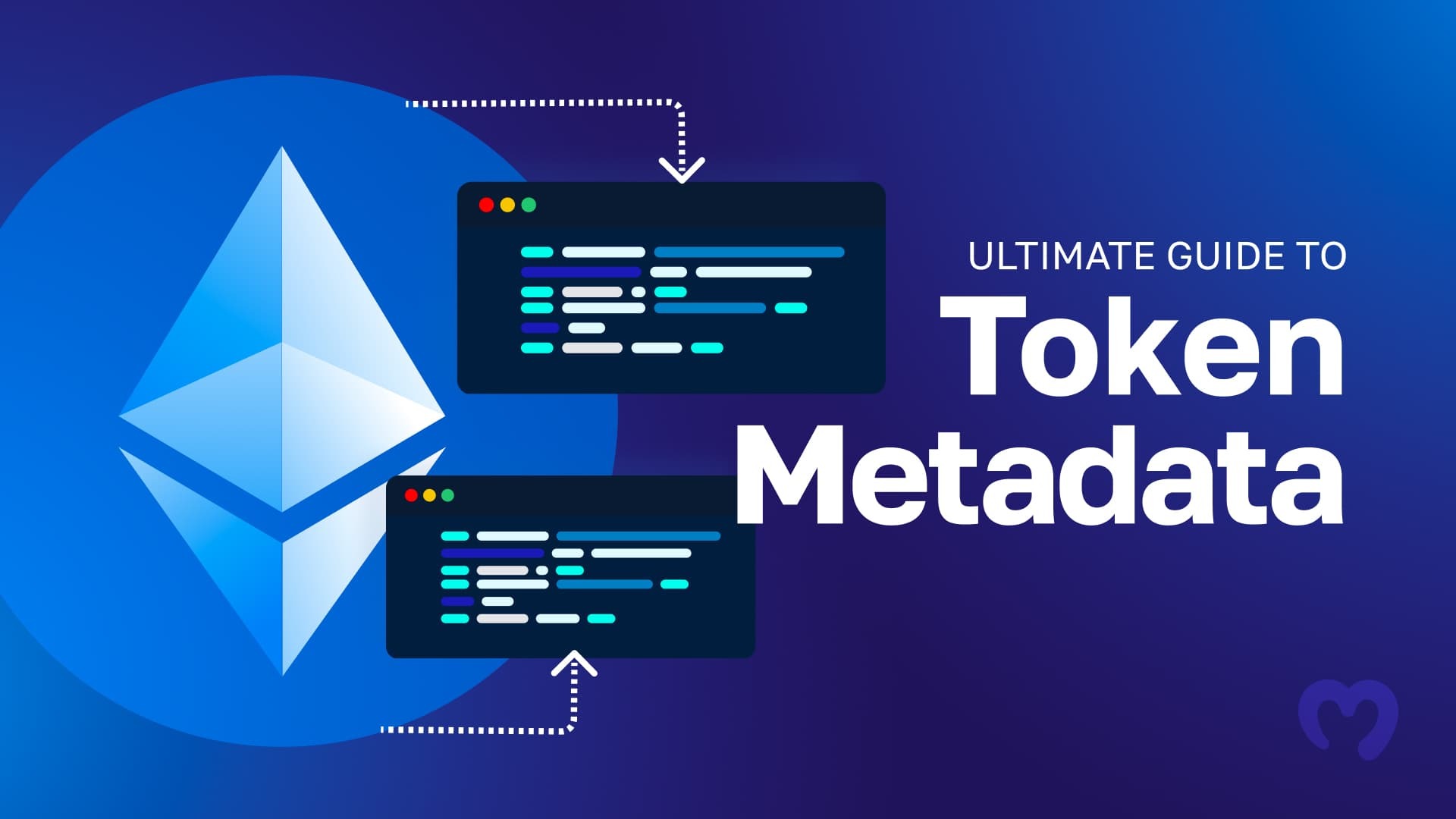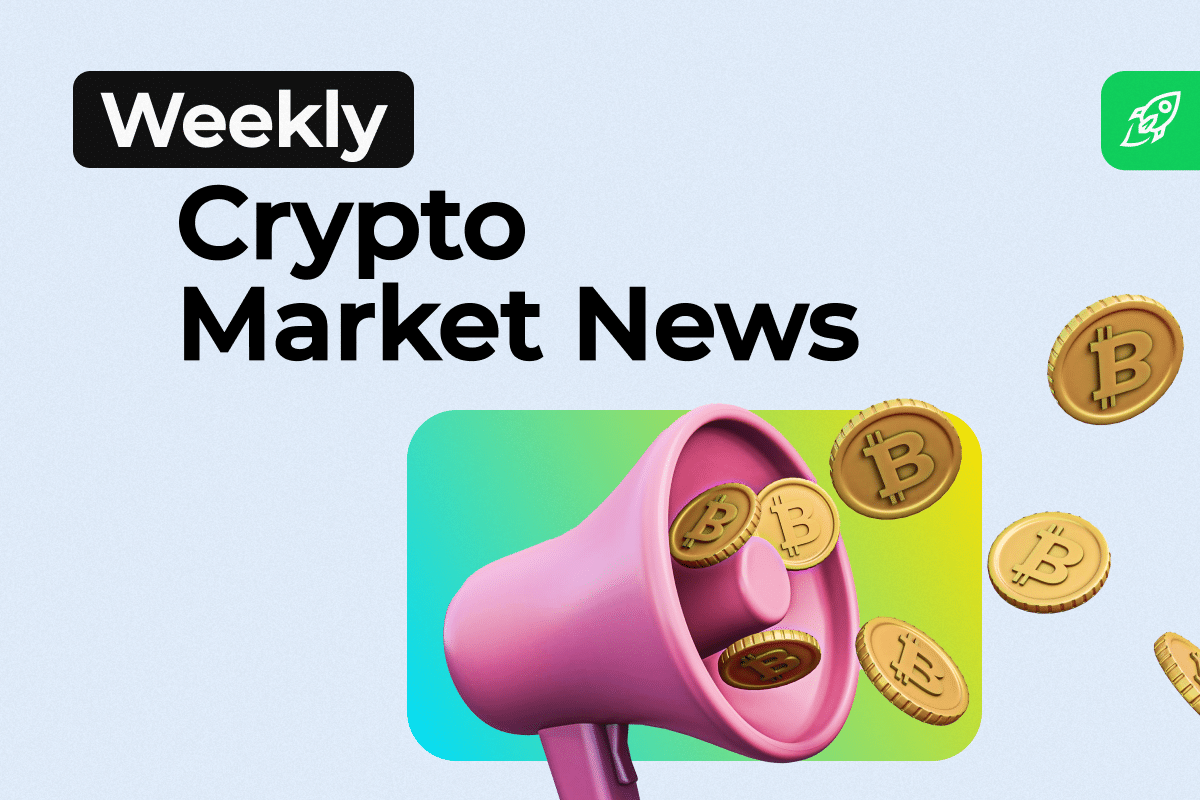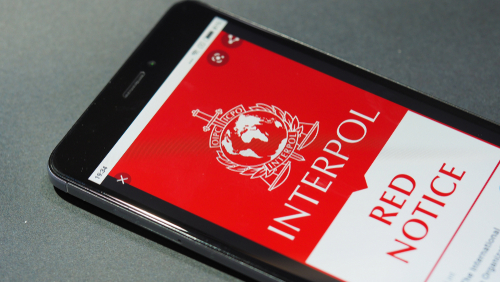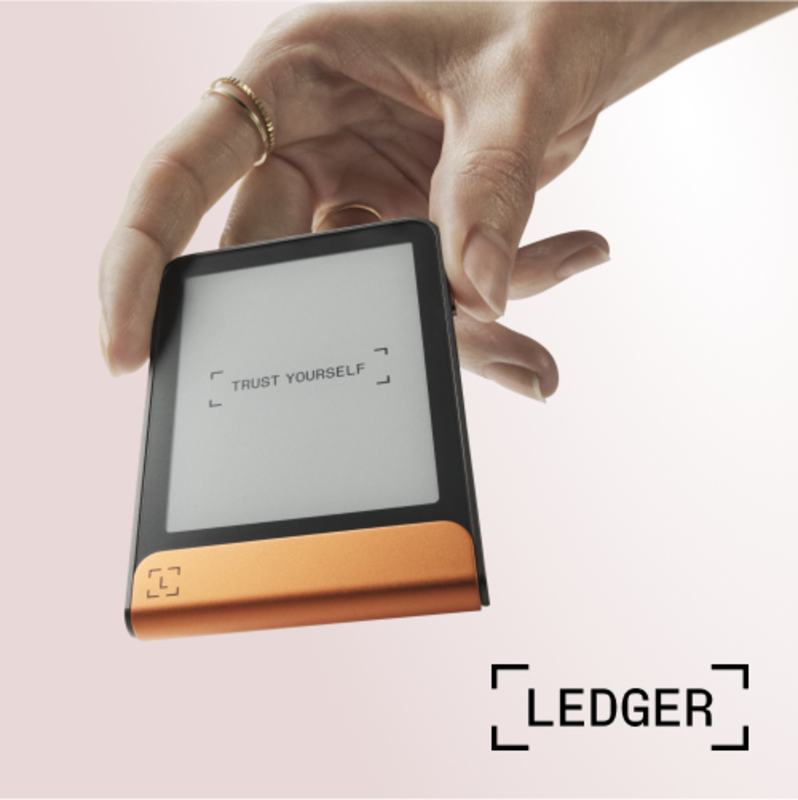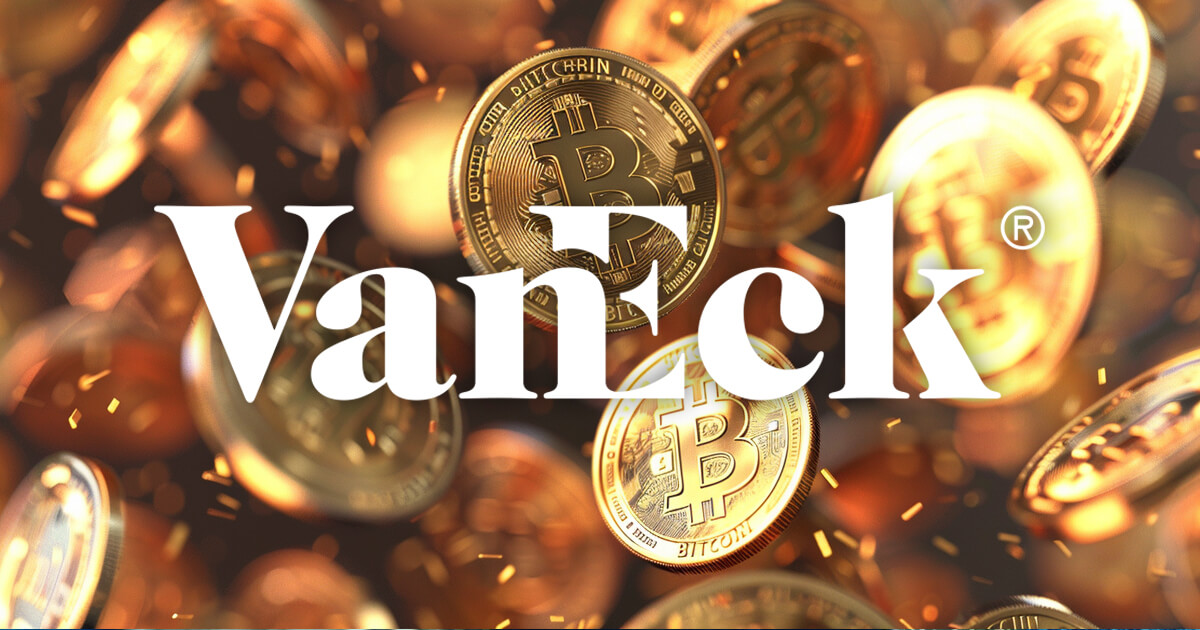Whether or not you’re an NFT collector or a dapp developer, it’s necessary to know what token metadata is and the way it works. In spite of everything, this information expands the performance of fungible and non-fungible tokens (NFTs). Should you’d prefer to discover this matter additional, then comply with alongside on this article. Not solely will you be taught what it’s and the varied functionalities token metadata brings, however you’ll additionally be taught extra about metadata for several types of tokens. Moreover, we’ll discover among the hottest token requirements.
It’s price mentioning that mastering token metadata will not be important should you don’t plan to mint tokens. Nonetheless, realizing the fundamentals of this topic will assist you to take advantage of out of the instruments serving to you fetch on-chain information and metadata, resembling Moralis’ NFT API. With the fundamentals beneath your belt and the perfect instruments in your facet, you’ll be capable to create all types of dapps. In spite of everything, it’s important to work with token metadata in the end no matter what kind of mission you’re planning to develop, whether or not that be a portfolio tracker, an NFT market, or perhaps a Web3 sport.
Whereas tackling these challenges, it’s essential to keep away from reinventing the wheel. In the end, no competent dapp developer needs to spend money and time on constructing the infrastructure that already exists. So, if you wish to begin constructing killer dapps with out breaking a sweat or the financial institution, make sure that to create your free Moralis account.
What’s Token Metadata?
Token metadata are items of data (information) specializing in what a selected fungible or non-fungible token represents. Furthermore, metadata performs a significant function concerning NFTs. Thus, we’ll primarily give attention to NFT metadata in at the moment’s information. Nonetheless, you’ll even have a chance to be taught the necessities about fungible token metadata herein. With that stated, let’s take a look at the next picture:
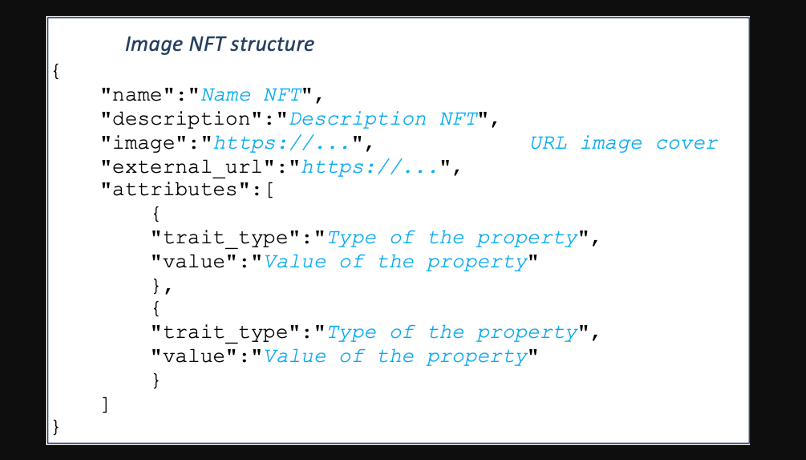
The above structural instance reveals the gist of non-fungible token metadata (for ERC-721 tokens). It’s price mentioning that, not like fungible tokens, NFTs include NFT-representing recordsdata. These recordsdata could be in all types of codecs; nevertheless, the commonest ones are picture recordsdata (JPEGs, PNGs, and many others.). Moreover, NFT-representing recordsdata should not saved on the blockchain as a result of they’re too massive. As such, token metadata is used to accommodate hyperlinks to these recordsdata; ideally, these recordsdata are saved utilizing decentralized storage options.
Nonetheless, though metadata recordsdata are usually quite a bit smaller, it’s nonetheless neither economically nor technically sound to retailer them on the blockchain. Consequently, decentralized storage options usually host metadata recordsdata, and IPFS stays some of the fashionable decentralized storage protocols. Nonetheless, there are different respected options (see the “Bonus” part under).
So, if neither NFT-representing recordsdata nor NFT metadata are saved on-chain, what could be saved on a blockchain? Briefly, URIs. These are hyperlinks pointing to token metadata recordsdata (often JSON recordsdata). That stated, NFT metadata and URIs are typically used interchangeably. The URI hyperlink comprises the main points as introduced within the picture above, and the next gives a broader perspective:
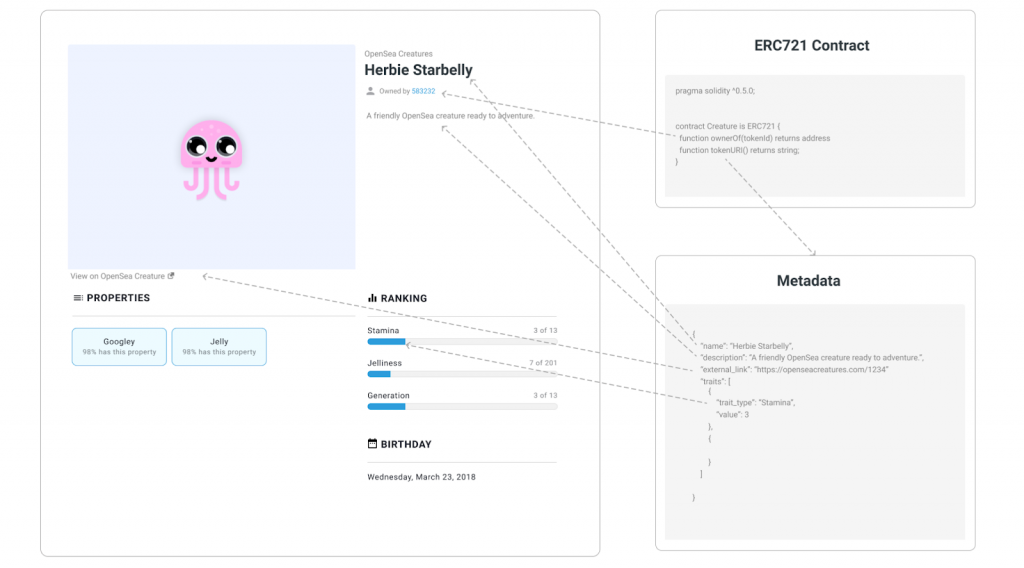
Moreover, token metadata particulars range relying on the token customary. As an example, the above picture represents the ERC-721 customary instance. Nonetheless, basically, you may anticipate token metadata to at the least embody the identify and the image of an NFT.
How Does Token Metadata Work?
If you wish to know the way token metadata works, that you must be taught the fundamentals of sensible contracts. In spite of everything, there’s a sensible contract behind each token. Moreover, these on-chain items of software program embody the above-explained URIs to retailer them within the blockchain database. Furthermore, it’s price repeating that sensible contracts make sure that predefined automated actions comply with particular predefined guidelines, that are triggered when particular predefined circumstances are met. All in all, to mint NFTs, devs must deploy tokens’ sensible contracts, which additionally regulate tokens’ transactions and possession.
The above signifies that if you wish to mint your personal NFTs, that you must create your personal sensible contract. The latter must comply with one of many NFT requirements. As well as, when deploying sensible contracts, you determine which blockchain community (Ethereum, BNB Chain, Polygon, and many others.) you wish to give attention to. Nonetheless, fortuitously, there are some shortcuts making this course of fairly simple. As an example, you need to use OpenZeppelin for EVM-compatible chains or Metaplex for Solana. These open-source instruments offer you verified NFT sensible contract templates.
Except for sensible contracts, metadata for NFT storage performs a major function. In spite of everything, offering a hyperlink to your NFT metadata in a sensible contract is significant. As already defined above, token metadata recordsdata should not saved on the blockchain. As a substitute, devs use cloud storage options for that function. Ideally, all NFT creators comply with the very best potential ranges of decentralization and retailer token metadata in a decentralized method. Nonetheless, to raised perceive how NFT metadata is saved, let’s take a look at the next illustration:

Be aware: As a substitute of the Ethereum blockchain, you may deploy sensible contracts to some other programmable chain. Additionally, as an alternative of IPFS, you could use some other storage resolution (ideally decentralized ones).
Bonus: Decentralized Storage Options
This bonus part is for these of you who may determine to create NFTs down the highway. In that case, you’ll wish to retailer your NFT-representing recordsdata and your token metadata in a decentralized manner. InterPlanetary File System (IPFS) is presently the perfect resolution for many NFTs. You may be taught extra about this resolution in our “IPFS NFT” article. Nonetheless, should you choose to give attention to blockchain-based storage, these are among the respected choices:
FilecoinCrust NetworkArweaveHoloStorjSia
Metadata for Totally different Sorts of Tokens
To this point, we’ve primarily targeted on NFT metadata. Why? Since you’ll most certainly cope with that kind. Nonetheless, this final information wouldn’t be full with out at the least touching base with fungible tokens (e.g., ERC-20 tokens). Furthermore, identical to NFTs, fungible tokens (FTs) are additionally minted and managed by sensible contracts. A majority of these Web3 contracts mint FTs based mostly on particular items of data. The latter include optionally available and obligatory information. As an example, the contract handle and the whole provide of tokens are the 2 important particulars that outline ERC-20 contracts.
Alternatively, the optionally available items of data embody the token identify, image, and decimal numbers. It’s these optionally available particulars that characterize fungible tokens’ metadata. Moreover, many customers take into account fungible tokens’ logos as a part of the metadata. Nonetheless, technically, metadata and a token’s emblem are separate issues. In spite of everything, FTs’ logos can’t be saved on the blockchain, however their metadata could be.
Nonetheless, a high quality fungible token metadata API, such because the Moralis Token API, may even fetch a token’s emblem. Basically, this “final ERC20 token API” makes fetching the stability of ERC20 tokens and native cash simple.
Nonetheless, the token metadata additionally varies based mostly on token requirements. As such, let’s cowl that side as effectively.
Token Requirements
As you could know, there are numerous token requirements. Nonetheless, since Ethereum continues to be the king amongst programmable chains, ERC requirements govern many of the tokens accessible. As identified above, these requirements additionally decide the construction of token metadata. Moreover, apart from the ERC-20 customary (which we talked about earlier), the opposite two requirements we wish to discuss are ERC-721 and “ERC 1155” (ERC-1155). The previous was the primary NFT customary and presently governs many older NFTs. Nonetheless, nowadays, it’s solely used for easy NFT initiatives. Why? As a result of ERC-1155 expanded the probabilities and has change into the gold customary for NFTs.
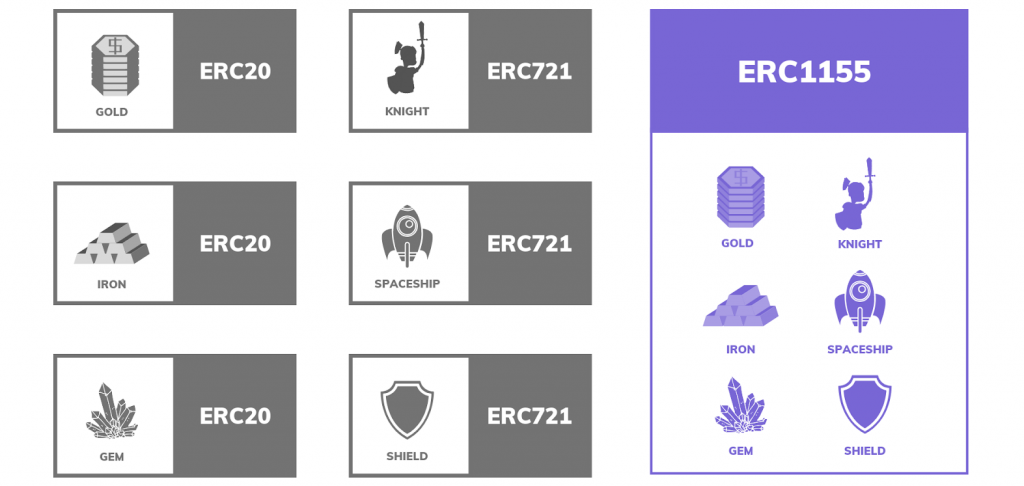
What’s extra, ERC-1155 is, in actual fact, a multi-token customary. It helps fungible, non-fungible, and even semi-fungible tokens. Consequently, it’s the newest go-to umbrella customary for manufacturing functions. Thus, we’ll take a better take a look at this customary’s token metadata format herein. This may assist you to when working with token metadata and in addition should you determine to create your personal tokens.
Be aware: Should you’d prefer to discover this customary in additional element, examine it with ERC-721, and find out about semi-fungible tokens, use the “ERC 1155” hyperlink above.
ERC-1155 Token Metadata
This text wouldn’t be full with out taking a look at an precise token metadata instance. So, right here’s a generic ERC-1155 metadata JSON file:
{
“title”: “Token Metadata”,
“kind”: “object”,
“properties”: {
“identify”: {
“kind”: “string”,
“description”: “Identifies the asset to which this token represents”
},
“decimals”: {
“kind”: “integer”,
“description”: “The variety of decimal locations that the token quantity ought to show – e.g. 18, means to divide the token quantity by 1000000000000000000 to get its consumer illustration.”
},
“description”: {
“kind”: “string”,
“description”: “Describes the asset to which this token represents”
},
“picture”: {
“kind”: “string”,
“description”: “A URI pointing to a useful resource with mime kind picture/* representing the asset to which this token represents. Contemplate making any pictures at a width between 320 and 1080 pixels and side ratio between 1.91:1 and 4:5 inclusive.”
},
“properties”: {
“kind”: “object”,
“description”: “Arbitrary properties. Values could also be strings, numbers, object or arrays.”
}
}
}
Trying on the above file, you may see that it comprises a title, kind, and properties. Then, inside properties, you may see the identify, decimals, description, picture, and properties. Moreover, every of those objects comprises “kind” and “description”. Yow will discover all the main points about each particular object subsequent to the “description”.
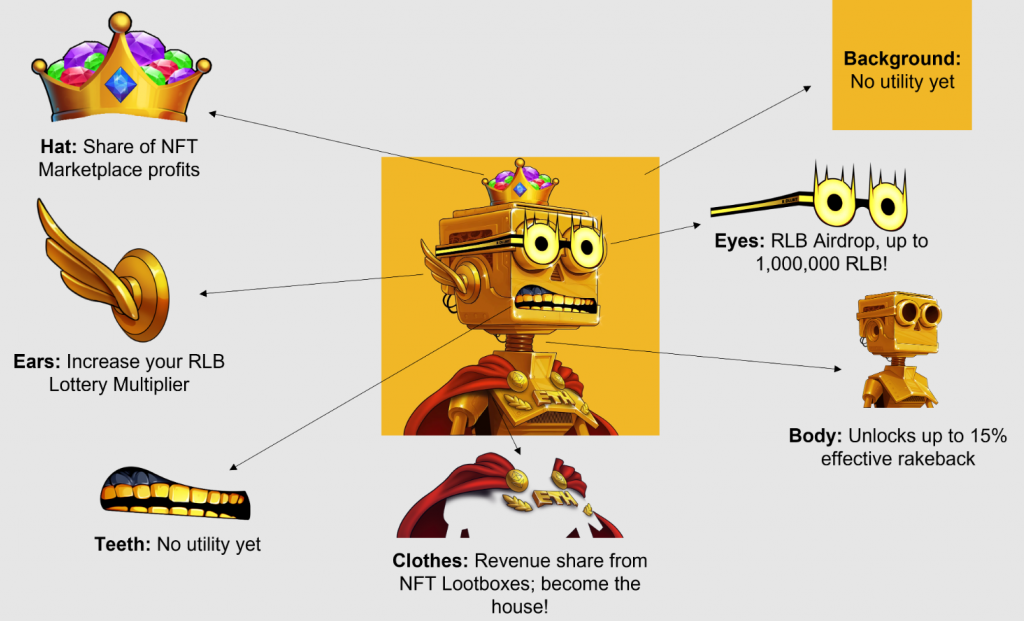
Relating to using NFTs, the final “properties” object is probably the most helpful one. In spite of everything, the latter permits NFT creators to increase the above schema with their very own arbitrary properties with out affecting the top-level namespace. Although, utilizing the “properties” object is, in fact, optionally available. Furthermore, the weather that devs add are often known as NFT attributes or traits. Nonetheless, right here’s an instance array of attributes:
“attributes”: [
{
“trait_type”: “Background”,
“value”: “Green”
},
{
“trait_type”: “Head”,
“value”: “Hat”
},
{
“trait_type”: “Level”,
“display_type”: “number”,
“value”: 10
}
…
]
We advocate you regulate NFT attributes as they play a key function in increasing the use circumstances of NFTs in Web3 gaming.
Working with Token Metadata
At this level, you understand that token metadata is a vital a part of Web3 growth. So, whether or not you wish to work with the main points of the tokens you deployed or present ones, you want a dependable and quick instrument to fetch that information. As talked about within the introduction of at the moment’s article, that is the place Moralis gives you the last word resolution. With its NFT API and Token API, you may question all main chains and get parsed information. This makes dapp growth and token implementation as simple because it will get. For instance, with this instrument in your nook, you may receive NFT assortment information and metadata with a single line of code.
As indicated within the above screenshot, you could find all of the API endpoint references within the Moralis documentation. That is additionally the place to deal with all types of beginner-friendly dapp growth tutorials. Nonetheless, if you wish to tackle some easy-to-follow video tutorials on methods to use token metadata, watch the 2 movies under. In these movies, one in every of our in-house builders explores numerous token metadata matters and tutorials. These embody methods to get metadata by image and in addition methods to get metadata by a contract handle! Should you’d prefer to comply with alongside within the tutorials, make sure that first to create your free Moralis account!
Final Information to Token Metadata – Abstract
The sections above took you on fairly a journey. Even should you knew nothing about token metadata, you now know greater than sufficient to hitch the Web3 revolution. At this level, you understand what this kind of metadata is and the way it works. You additionally know the important thing variations between NFT and FT metadata. Nonetheless, you additionally had a chance to get acquainted with the ERC-1155 token metadata customary. Lastly, we shortly defined what makes Moralis the perfect resolution for working with token metadata, as illustrated within the two connected video tutorials!
Shifting ahead, make sure that to dive into Moralis’ docs. This useful resource is all that you must take your legacy expertise and change into a dapp developer free of charge. As well as, the Moralis YouTube channel and the Moralis weblog can help you additional in exploring different blockchain growth matters. As an example, you may be taught all that you must find out about Ethereum Python implementation, getting all NFT transfers, listening to sensible contract occasions utilizing ethers.js, calling a sensible contract operate from JavaScript, Web3 py, and far more.
Alternatively, you may take a extra skilled strategy to your crypto schooling. If that pursuits you, it’s best to enroll in Moralis Academy. There, you may change into blockchain licensed by finishing all types of blockchain growth programs. By enrolling, you may considerably enhance your probabilities of going full-time crypto. Furthermore, we encourage you first to cowl blockchain and Bitcoin fundamentals. Except for top-notch programs, this on-line academy can also be the place to get professional mentorship and change into a member of some of the advancing communities. Accordingly, it’s an amazing place to fulfill and join with like-minded people who already see the ability of Web3.

